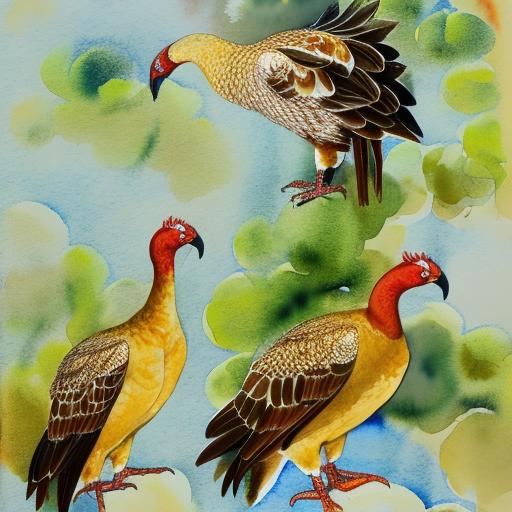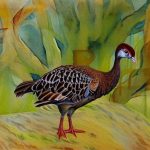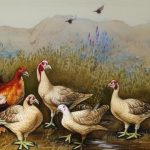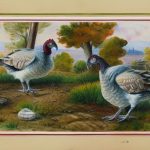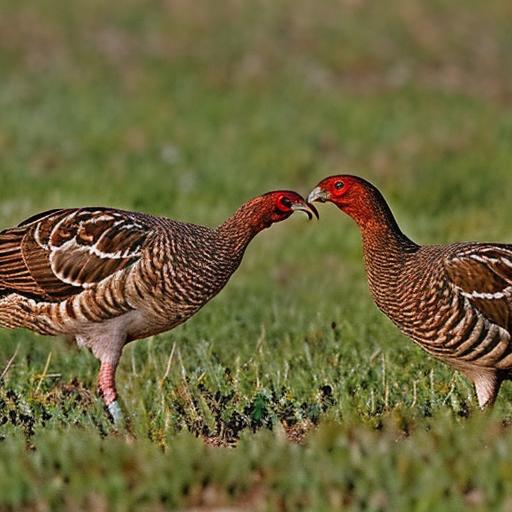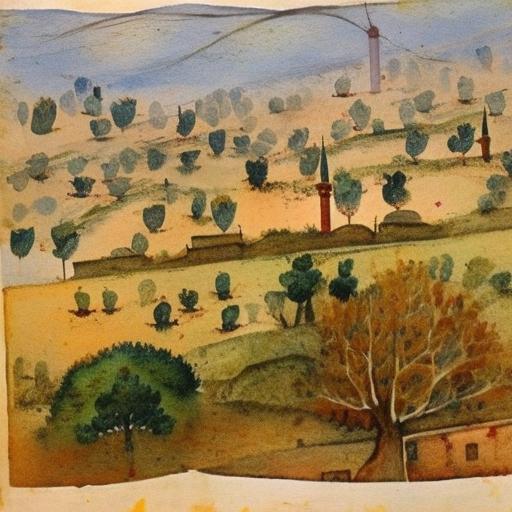The breeding season for turkeys, also known as the mating season, typically occurs in the spring. This is a crucial time for turkeys as it is when they engage in courtship rituals and mate to produce offspring. The breeding season is a time of heightened activity for turkeys, as they seek out mates and establish territories. During this time, male turkeys, known as toms, display their vibrant plumage and perform elaborate courtship displays to attract females, known as hens. The breeding season is essential for the continuation of turkey populations, as it is when new generations of turkeys are produced.
The breeding season for turkeys is a critical period in their life cycle, as it is when they engage in reproductive activities. Understanding the timing and behaviors associated with the breeding season is essential for conservation efforts and wildlife management. By understanding the breeding season, researchers and conservationists can better protect turkey populations and their habitats, ensuring the continued survival of these iconic birds.
Key Takeaways
- Turkey breeding season typically occurs in the spring
- Factors such as day length and temperature influence the timing of turkey breeding
- Turkey courtship involves displays of strutting, gobbling, and tail fanning
- Environmental cues like food availability and habitat quality play a role in turkey breeding
- Breeding season is crucial for maintaining healthy turkey populations
- Human activities like habitat destruction and hunting can disrupt turkey breeding
- Conservation efforts focus on preserving turkey habitats and managing hunting regulations
Factors that influence the timing of turkey breeding
Several factors influence the timing of turkey breeding, including environmental cues, hormonal changes, and social dynamics within turkey populations. One of the primary factors that influence the timing of turkey breeding is the lengthening of daylight hours. As the days grow longer in the spring, turkeys experience hormonal changes that trigger the onset of the breeding season. This increase in daylight hours signals to turkeys that it is time to engage in reproductive activities.
In addition to daylight hours, environmental factors such as temperature and food availability can also influence the timing of turkey breeding. Warmer temperatures and an abundance of food can provide turkeys with the resources they need to successfully breed and raise offspring. Social dynamics within turkey populations also play a role in determining the timing of breeding, as dominant males establish territories and compete for mates. These factors all work together to influence the timing of turkey breeding and play a crucial role in the reproductive success of turkey populations.
The behaviors and rituals of turkey courtship
During the breeding season, turkeys engage in a variety of behaviors and rituals as part of their courtship displays. Male turkeys, or toms, display their vibrant plumage and perform elaborate courtship dances to attract females. These displays often involve puffing up their feathers, fanning out their tails, and strutting around to show off their impressive appearance. Toms also emit low, booming calls to attract hens and establish their dominance within the population.
Female turkeys, or hens, are attracted to males with the most impressive displays and will often observe multiple males before choosing a mate. Once a pair has formed, they engage in pre-mating behaviors such as mutual preening and vocalizations. The courtship rituals of turkeys are not only visually stunning but also serve an important purpose in ensuring reproductive success for the species.
The role of environmental cues in turkey breeding
Environmental cues play a crucial role in turkey breeding, as they signal to turkeys that it is time to engage in reproductive activities. One of the most significant environmental cues for turkeys is the lengthening of daylight hours. As the days grow longer in the spring, turkeys experience hormonal changes that trigger the onset of the breeding season. This increase in daylight hours signals to turkeys that it is time to begin courtship displays and mate with potential partners.
In addition to daylight hours, temperature and food availability also play a role in signaling to turkeys that it is time to breed. Warmer temperatures provide turkeys with the ideal conditions for nesting and raising offspring, while an abundance of food ensures that they have the resources they need to successfully breed. These environmental cues are essential for coordinating the timing of turkey breeding and ensuring the reproductive success of turkey populations.
The significance of breeding season for turkey populations
The breeding season is of utmost significance for turkey populations as it is when new generations of turkeys are produced, ensuring the continuation of the species. During this time, turkeys engage in courtship displays, mate, and nest to raise offspring. The successful breeding season is crucial for maintaining healthy turkey populations and ensuring genetic diversity within the species.
The breeding season also plays a vital role in regulating turkey populations and maintaining ecological balance within their habitats. By producing offspring during the breeding season, turkeys contribute to the overall health and stability of their ecosystems. Additionally, the behaviors and rituals associated with the breeding season are essential for maintaining social dynamics within turkey populations and ensuring the survival of the species.
Human impact on turkey breeding season

Human activities can have a significant impact on turkey breeding seasons, affecting factors such as habitat loss, hunting pressure, and climate change. Habitat loss due to urban development, agriculture, and deforestation can disrupt turkey breeding habitats, leading to a decline in reproductive success. Additionally, hunting pressure can impact turkey populations by reducing the number of adult birds available for breeding.
Climate change can also affect turkey breeding seasons by altering environmental cues such as temperature and food availability. Changes in temperature patterns and shifts in food availability can disrupt the timing of turkey breeding, leading to decreased reproductive success. Human impact on turkey breeding seasons highlights the importance of conservation efforts to protect turkey habitats and ensure the continued survival of these iconic birds.
Conservation efforts to protect turkey breeding habitats
Conservation efforts are essential for protecting turkey breeding habitats and ensuring the continued survival of turkey populations. One key conservation strategy is habitat preservation, which involves protecting critical nesting and foraging areas for turkeys. By preserving these habitats, conservationists can ensure that turkeys have access to the resources they need to successfully breed and raise offspring.
Another important conservation effort is managing hunting pressure to ensure sustainable turkey populations. By implementing regulations on hunting seasons and bag limits, conservationists can help maintain healthy turkey populations and protect them during their critical breeding seasons. Additionally, education and outreach programs can raise awareness about the importance of protecting turkey habitats and promoting coexistence between humans and turkeys.
In conclusion, understanding the breeding season for turkeys is essential for conservation efforts and wildlife management. Factors such as environmental cues, hormonal changes, and social dynamics influence the timing of turkey breeding, while behaviors and rituals play a crucial role in courtship displays. The significance of the breeding season for turkey populations cannot be overstated, as it ensures the continuation of the species and maintains ecological balance within their habitats. Human impact on turkey breeding seasons underscores the need for conservation efforts to protect turkey habitats and ensure their continued survival. By preserving critical nesting areas, managing hunting pressure, and raising awareness about the importance of protecting turkey habitats, conservationists can help safeguard these iconic birds for future generations.
If you’re wondering when the breeding season for turkeys is, you’ll find all the information you need in this comprehensive article on PoultryWizard. Understanding the mating season for turkeys is crucial for successful breeding and raising healthy flocks. For more tips on creating a suitable environment for poultry, check out their articles on converting a shed to a chicken coop and the benefits of a snap-lock chicken coop.
FAQs
What is the breeding season for turkeys?
The breeding season for turkeys typically occurs in the spring, usually from March to May.
Why do turkeys breed in the spring?
Turkeys breed in the spring because it coincides with the availability of food and the longer daylight hours, which are important factors for successful reproduction.
How do turkeys attract mates during breeding season?
Male turkeys, known as toms, attract mates by displaying their feathers, puffing up their bodies, and making vocalizations to attract females, known as hens.
How long does the turkey breeding season last?
The turkey breeding season typically lasts for a few weeks, during which time the hens will lay and incubate their eggs.
What happens after the breeding season for turkeys?
After the breeding season, the hens will continue to incubate their eggs for about 28 days, and then care for their young poults until they are old enough to fend for themselves.
Meet Walter, the feathered-friend fanatic of Florida! Nestled in the sunshine state, Walter struts through life with his feathered companions, clucking his way to happiness. With a coop that’s fancier than a five-star hotel, he’s the Don Juan of the chicken world. When he’s not teaching his hens to do the cha-cha, you’ll find him in a heated debate with his prized rooster, Sir Clucks-a-Lot. Walter’s poultry passion is no yolk; he’s the sunny-side-up guy you never knew you needed in your flock of friends!

